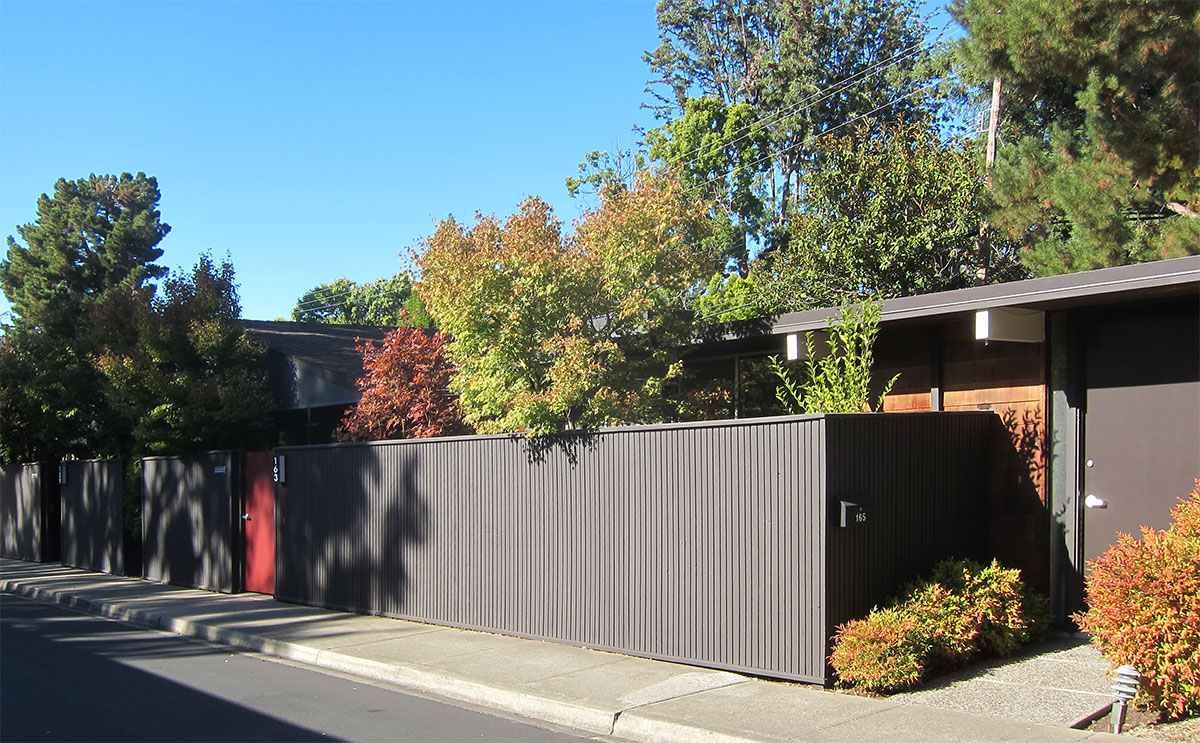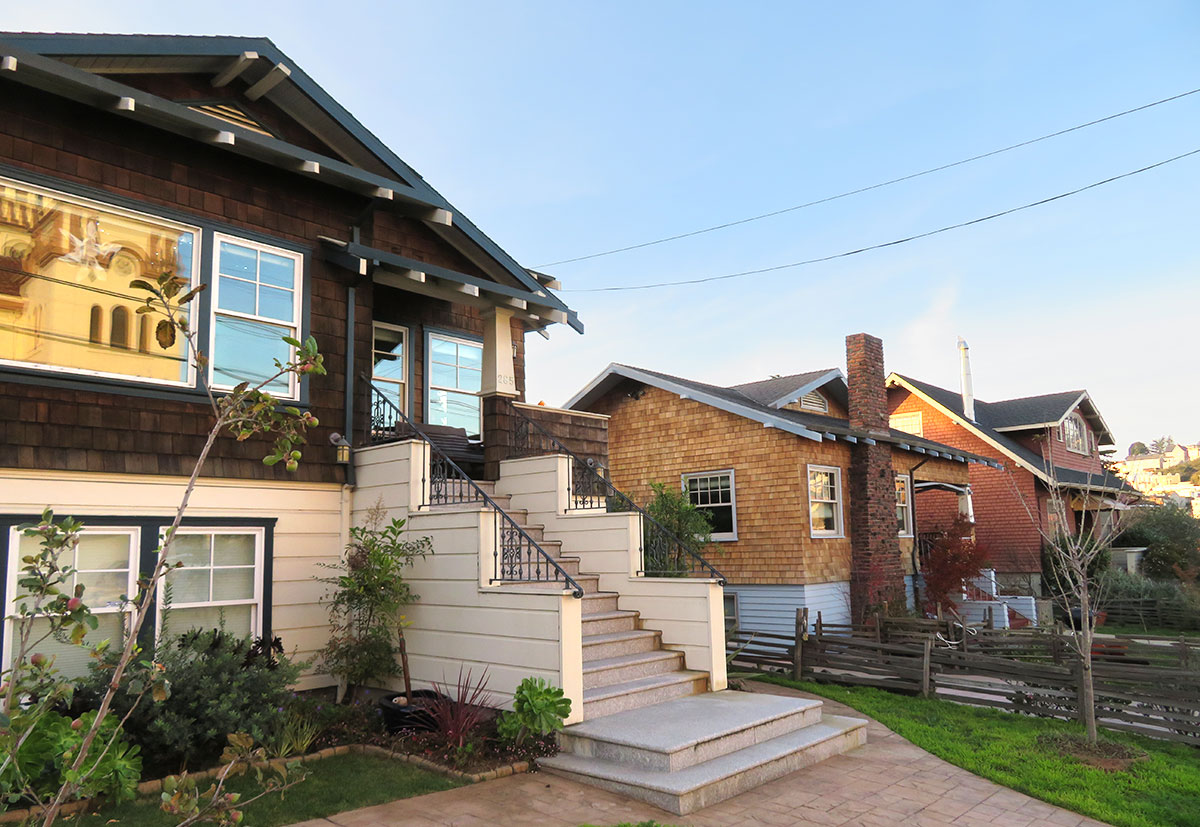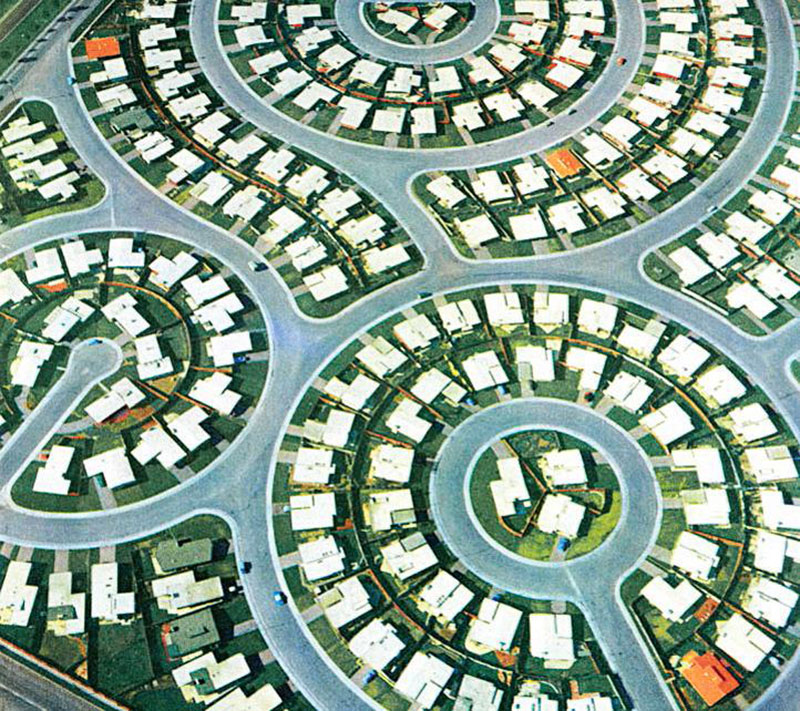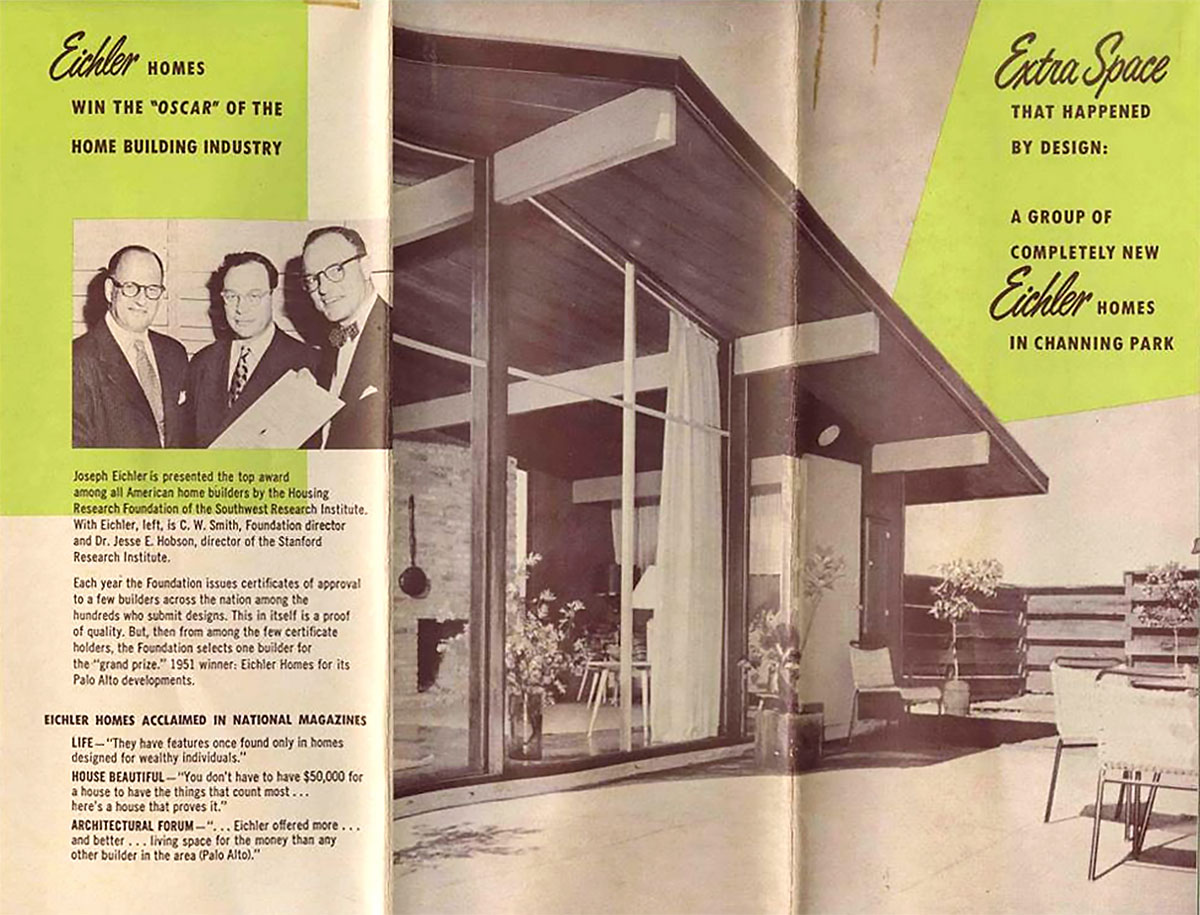
Did Eichler Do More Harm Than Good?
 |
Has the tide turned against Eichler neighborhoods and all that they have come to stand for in history?
Eichler tracts are often portrayed as virtual suburban paradises, architecturally distinctive, light-filled homes arrayed, most often, on curving streets and attracting families headed by moms and dads who possess intellectual curiosity and aesthetic interests.
But are they instead places that “delivered something their creators never thought about, something more terrifying and more enduring than all they set out to do?” as architect Daniel Solomon has surmised.
Solomon’s critique that Joe Eichler, “aesthetic visionary” though he was, nonetheless helped create “sprawling, isolating suburbs [that] wrought ruthless damage on our cities and city-regions,” was delivered 20 years ago.
 |
But since then the critique of the suburbia that Joe helped build has only grown, and is resulting in policies that could threaten the way of life that has developed in Eichler neighborhoods today, and could affect the look of these neighborhoods as well.
Solomon, an eminent San Francisco architect who has been a leader in the movement called New Urbanism, used earlier 20th century bungalow communities as a sort of model – “beautiful streets, common courtyards, neighborhoods, communities, the American town at its noblest, most democratic and most civil.”
“Eichler's streets are the opposite,” Solomon wrote in his book ‘Global City Blues.’ “Period piece publicity photographs depict an entirely private world in which no two buildings reside next to one another, in which there is never a relationship to something older or different. It is a world in which the vanity fair of the street has given way to the carport.”
Of course the period when Joe began his building was very different than today. Then, right after World War II, the challenge was to deliver housing for returning GIs and their growing families, for an expanding middle class.
Land at the edges of cities was plentiful, and Joe was happy to turn the orchards of Santa Clara Valley into the tracts of today’s Silicon Valley.
“Eichler was an aesthetic missionary, but the times were larger than he was,” Solomon wrote.
 |
Eugene Kupper, an architect and educator who is a contemporary of Solomon, knows Solomon, and has written about his work, notes that Eichler benefited from the G.I. Bill and other veterans’ benefits that financed housing, from the federal effort to build interstate highways, and from 'white flight' from integrated cities to largely segregated suburbs.
“That made it possible for people to live in Eichler houses,” Kupper said in an interview.
Solomon wrote: “Eichler was a man of his time, arguably a great man of his time, but the time that all that happened in the years right after the war were larger than he was.”
What Joe produced, Solomon writes, was “the hegemony of the private over the public, in an endless landscape of low-density, single-family sprawl, with streets lined with carports and nothing to walk to even if you wanted to.”
The New Urbanists decry suburban sprawl and argue instead for infill within cities.
“The Congress for the New Urbanism views disinvestment in central cities, the spread of placeless sprawl,” the congress’s charter reads, “increasing separation by race and income, environmental deterioration, loss of agricultural lands and wilderness, and the erosion of society’s built heritage as one interrelated community-building challenge.”
In recent years, attention has also been drawn to the evils of single-family zoning, which some see as a form of de facto racial segregation. By requiring good-sized lots and single-family homes for an entire neighborhood, people with lower incomes – including some Black people and other minorities – could not buy.
 |
So while Joe Eichler won fame for being willing to sell to Black and Asian people when other builders would not, it didn’t make much difference, some people today would say, because few lower-income minorities could afford to buy.
Interestingly, Eichler did incorporate higher-density housing into several of his subdivisions, including Greenmeadow in Palo Alto, which has two townhouse complexes alongside the larger tract of single-family homes.
And in other cases, as plans for un-built developments show, Joe had intended to build more multi-family housing alongside some other subdivisions. It is not clear why more of this didn’t happen.
In the coming years, due to state laws intended to end or at least weaken single-family zoning ordinances, many neighborhoods, perhaps including Eichlers, may see the arrival of denser housing types, accessory dwelling units, perhaps even four-plexes.
Rather than theorizing about the sins of the suburbs, lawmakers and planners will attempt to alleviate them.
- ‹ previous
- 147 of 677
- next ›



